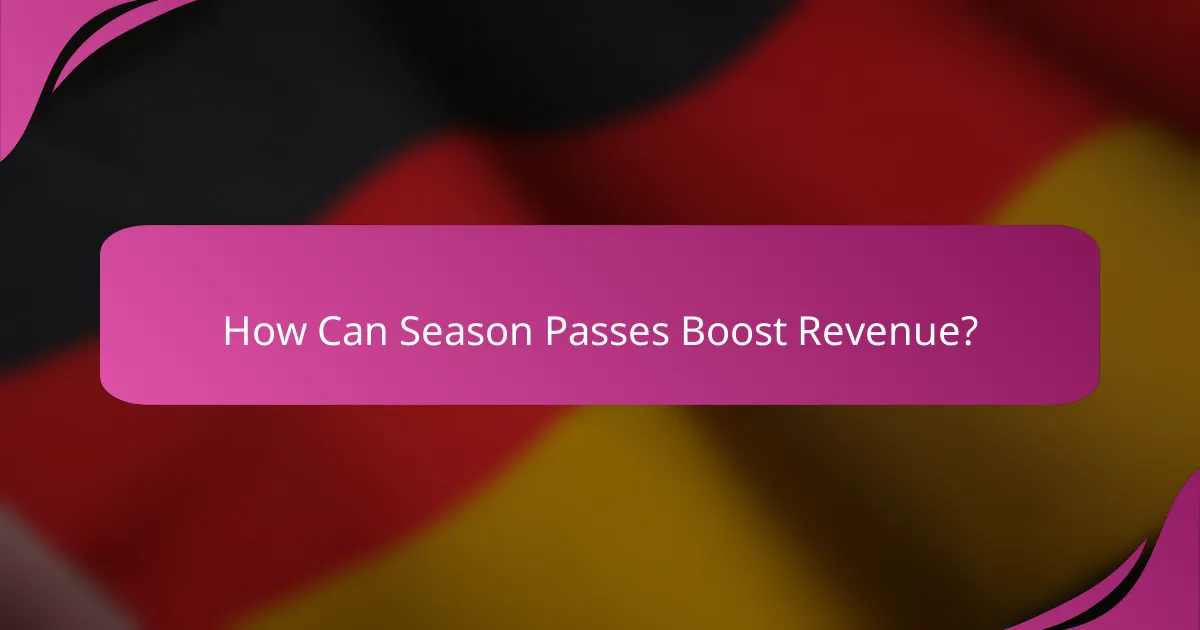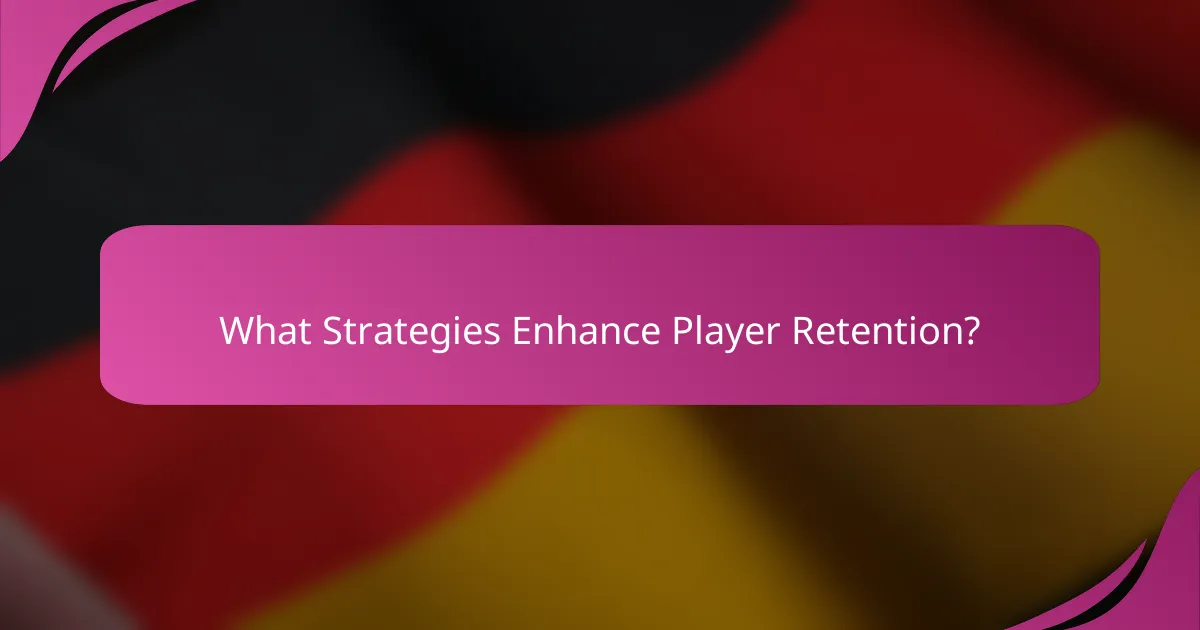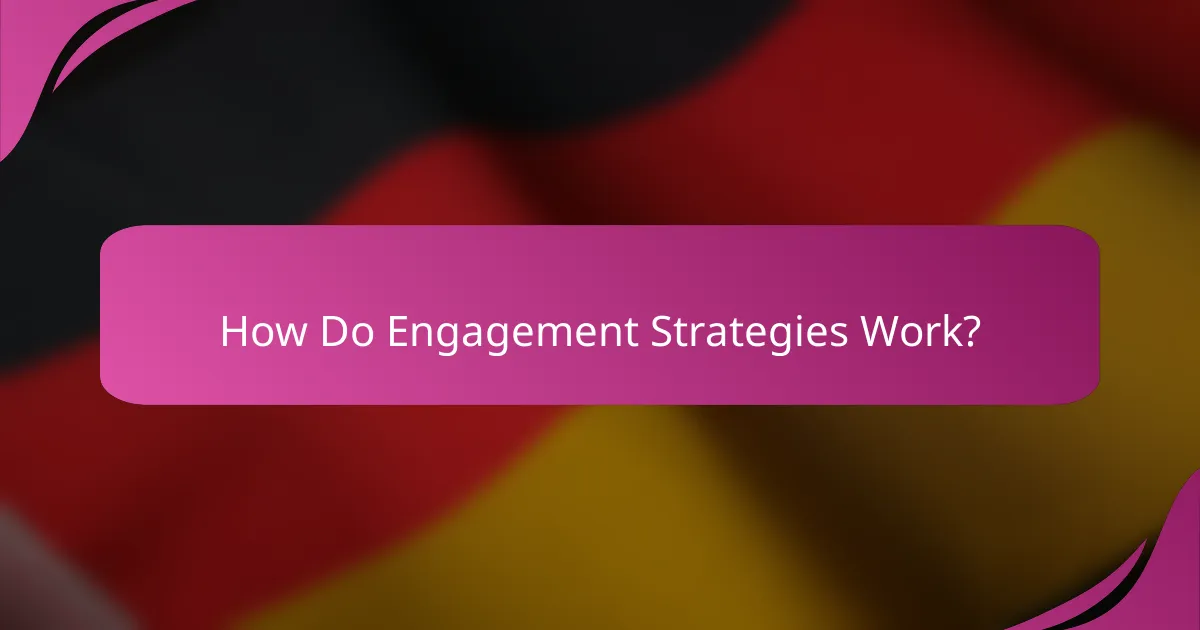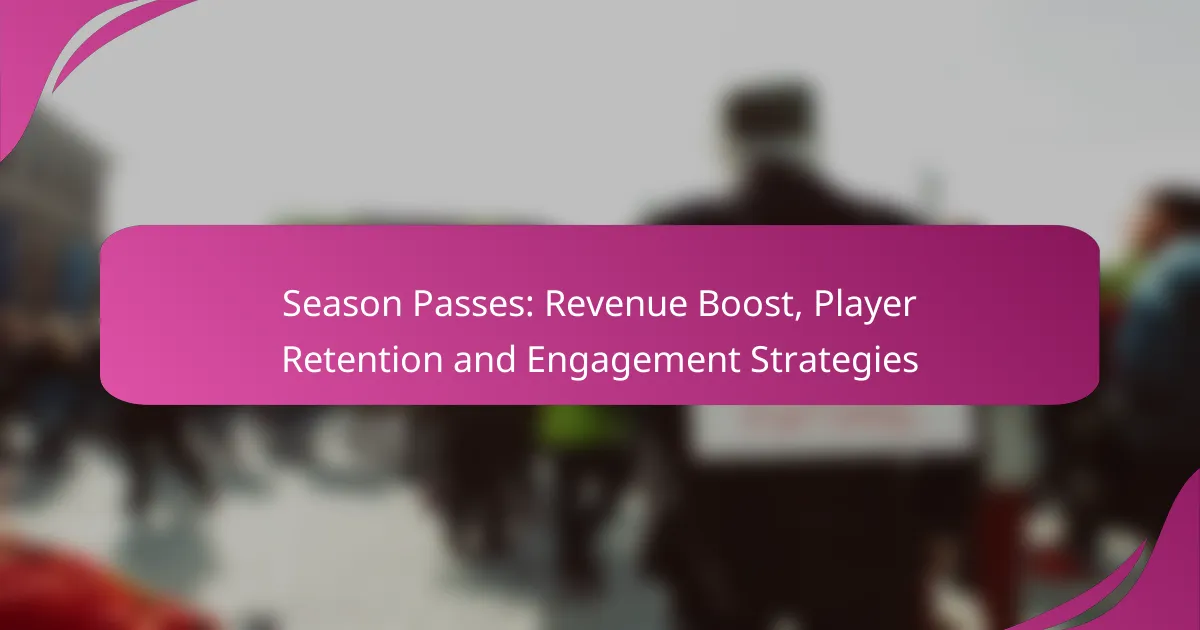Season passes are a powerful tool for game developers, driving revenue growth while enhancing player loyalty and engagement. By offering exclusive content and experiences, these passes encourage players to commit to their gaming journey, fostering a deeper connection with the game. Implementing effective retention strategies, such as rewards programs and community engagement, can further elevate player satisfaction and interaction, ultimately leading to increased revenue and a vibrant gaming community.

How Can Season Passes Boost Revenue?
Season passes can significantly enhance revenue by providing a steady stream of upfront cash flow while fostering player loyalty and engagement. By offering exclusive content and experiences, they encourage players to invest in their gaming experience over a longer term.
Increased upfront cash flow
Implementing season passes allows companies to collect revenue upfront, which can be crucial for funding ongoing development and marketing efforts. This immediate influx of cash can help stabilize finances and support new content creation.
For example, a game priced at $10 for a season pass can generate substantial revenue if thousands of players purchase it at launch, compared to a traditional pay-per-content model that relies on sporadic purchases.
Higher customer lifetime value
Season passes can increase customer lifetime value (CLV) by encouraging players to remain engaged over an extended period. Players who invest in a season pass are more likely to continue playing and spending on additional content or microtransactions.
By offering ongoing rewards and exclusive content, developers can keep players invested, leading to higher overall spending compared to those who only make one-time purchases.
Enhanced pricing strategies
Season passes enable developers to implement tiered pricing strategies, offering different levels of access and rewards. This flexibility allows companies to cater to varying player preferences and budgets, maximizing revenue potential.
For instance, a basic season pass might cost $10, while a premium version could be priced at $25, offering additional exclusive items or experiences. This approach can attract both casual and dedicated players.
Attracting new customers
Season passes can serve as a marketing tool to attract new players by showcasing the value of ongoing content and engagement. Highlighting exclusive rewards and experiences can entice potential customers to try the game.
Promotional campaigns that emphasize the benefits of a season pass can effectively draw in new players, especially during the launch of a new season or major update.
Seasonal promotions
Seasonal promotions tied to specific events or holidays can boost interest in season passes. Offering limited-time discounts or exclusive content during these periods can drive sales and enhance player engagement.
For example, a game might offer a 20% discount on season passes during a holiday event, encouraging players to purchase and participate in the festivities. This strategy can create a sense of urgency and increase revenue during peak times.

What Strategies Enhance Player Retention?
Effective strategies for enhancing player retention focus on creating value and fostering loyalty among players. By implementing exclusive benefits, rewards programs, personalized communication, and community engagement, game developers can significantly boost player engagement and satisfaction.
Exclusive member benefits
Offering exclusive member benefits is a powerful way to enhance player retention. These benefits can include early access to new content, special in-game items, or discounts on future purchases. By providing unique perks, players feel valued and are more likely to remain engaged with the game.
For example, a game might offer a season pass that grants players access to premium content not available to non-members. This creates a sense of exclusivity and encourages players to invest in their gaming experience.
Loyalty rewards programs
Loyalty rewards programs incentivize players to continue playing by offering rewards based on their engagement levels. These programs can include points systems where players earn points for playing regularly, which can be redeemed for in-game currency or items.
Implementing tiered rewards can further enhance this strategy. For instance, players who reach certain milestones could unlock additional benefits, such as exclusive skins or early access to new features, encouraging them to stay active in the game.
Personalized communication
Personalized communication helps maintain player interest and fosters a sense of connection. By utilizing data analytics, developers can tailor messages to individual players based on their gameplay habits and preferences.
For example, sending personalized emails or in-game notifications about upcoming events or content that aligns with a player’s interests can significantly increase engagement. This approach makes players feel recognized and valued, which can improve retention rates.
Community engagement events
Community engagement events create opportunities for players to connect with each other and the developers. These events can include tournaments, live Q&A sessions, or in-game celebrations that encourage player interaction and foster a sense of belonging.
Hosting regular community events can keep the game fresh and exciting. For instance, seasonal competitions can motivate players to log in regularly, while community feedback sessions can make players feel involved in the game’s development, ultimately enhancing their loyalty and retention.

How Do Engagement Strategies Work?
Engagement strategies are designed to enhance player interaction and retention through various methods that keep the gaming experience fresh and exciting. By employing techniques such as gamification, regular content updates, social media interaction, and feedback loops, developers can significantly boost player loyalty and revenue.
Gamification elements
Gamification involves integrating game-like features into non-game contexts to motivate players. This can include rewards systems, challenges, and leaderboards that encourage competition and achievement. For instance, offering badges for completing specific tasks can enhance player motivation and engagement.
Consider implementing tiered rewards that unlock as players progress, which can keep them invested over time. However, avoid making rewards too easy to achieve, as this can diminish their value and impact on player retention.
Regular content updates
Regular content updates are crucial for maintaining player interest and engagement. This can involve introducing new levels, characters, or storylines that keep the game dynamic. Aim for updates every few weeks to maintain momentum and excitement among players.
Additionally, consider seasonal events or themed content that aligns with holidays or current trends. This not only attracts returning players but can also draw in new users looking for fresh experiences.
Social media interaction
Engaging with players on social media platforms can foster a sense of community and loyalty. Regularly posting updates, hosting contests, and responding to player feedback can enhance the overall gaming experience. Encourage players to share their achievements or game moments online to create organic buzz.
Utilize platforms like Twitter, Instagram, and Discord to build a vibrant community. However, ensure that interactions are genuine and not overly promotional, as this can alienate players.
Feedback loops
Feedback loops involve collecting player input to improve the gaming experience continuously. This can be achieved through surveys, in-game feedback options, or monitoring player behavior. By actively seeking and implementing feedback, developers can show players that their opinions matter.
Establish a routine for reviewing feedback and making necessary adjustments, which can significantly enhance player satisfaction. Avoid ignoring negative feedback; instead, use it as an opportunity to make meaningful changes that resonate with your audience.

What Are the Key Metrics for Success?
The key metrics for success in implementing season passes include customer acquisition cost, retention rates, and engagement levels. These metrics help assess the effectiveness of the season pass strategy in attracting new players, keeping existing ones, and ensuring they remain actively involved in the game.
Customer acquisition cost
Customer acquisition cost (CAC) refers to the total expense incurred to acquire a new player. This includes marketing expenses, promotional offers, and any discounts provided to entice new users to purchase a season pass. A lower CAC indicates a more efficient strategy, which can be achieved through targeted marketing campaigns and leveraging social media platforms.
To optimize CAC, consider using referral programs or partnerships with influencers to reach potential players. Tracking the effectiveness of various channels can help identify the most cost-effective methods for acquiring new customers.
Retention rates
Retention rates measure the percentage of players who continue to engage with the game after purchasing a season pass. High retention rates are crucial for long-term success, as they indicate that players find value in the content offered. Strategies to improve retention may include regular updates, exclusive in-game items, and community events.
Monitoring retention over time can reveal trends and help identify when players are likely to disengage. Implementing feedback loops, such as surveys or in-game prompts, can provide insights into player satisfaction and areas for improvement.
Engagement levels
Engagement levels reflect how actively players participate in the game after acquiring a season pass. This can be measured through metrics such as daily active users, session length, and in-game purchases. High engagement levels suggest that players are enjoying the content and are likely to renew their season passes in the future.
To boost engagement, consider introducing time-limited challenges or exclusive events that encourage players to log in regularly. Analyzing player behavior can help tailor content to meet their interests, ultimately enhancing the overall gaming experience.
